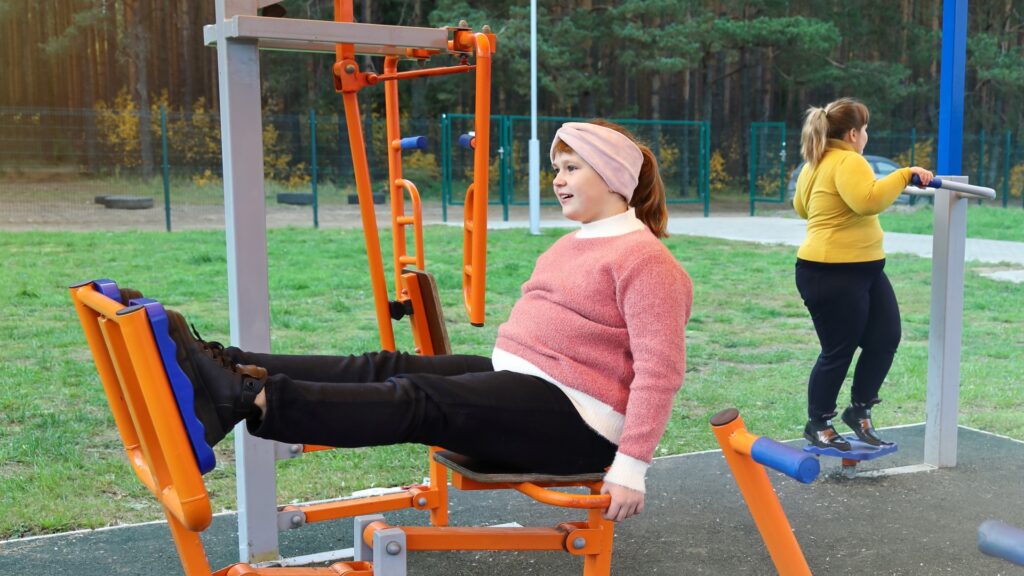Autism
Children with Autism Spectrum Disorder (ASD) are usually less able to interact with the world as other children do. They typically have deficits in verbal and non-verbal communication, social awareness and interactions and imaginative play (variable interests and behaviours). As children with ASD often find it difficult to interact and/or communicate in social contexts, and often experience repetitive patterns of behaviours and interests, it can sometimes make it difficult to engage in healthy lifestyle interventions.
Home / Autism

Autism spectrum disorder
Exercise can help manage the negative heath implications of physical inactivity on overall health, and can also help manage a number of Autism-specific symptoms. Research supports the benefits related to motor development and physical fitness, as well as decreases in repetitive, stereotyped, and self-injurious behaviours, and improvements related to cognition. Exercise has been reported to contribute to, or enhance, treatment outcomes, help manage behaviours, improve academic performance, as well as provide holistic health benefits and minimise health risks associated with inactivity.
Why it is important to exercise
Research demonstrates that exercise interventions led to a 37% improvement in symptoms of ASD, specifically behavioural and academic improvement. A study published in 2018 looking at the effect of exercise on children with ASD found that those exposed to the exercise intervention twice a week for 48 weeks showed an important decrease in their Autism-related symptoms.
The benefits were particularly pronounced in reductions in stereotypical behaviour patterns, and improvements in verbal and non-verbal social communication skills. The same study also reported that parent perceptions of their child’s quality of life increased significantly in comparison to the control group. Exercise interventions can vary dependant on the severity of ASD.

Improvements in behaviour
Moderate to vigorous exercise can show an effect on decreasing repetitive behaviour for children and adolescents with ASD.
Exercise is a desirable treatment to reduce self-stimulatory behaviour (SSB) as it is an inexpensive and can be an easy form of treatment, and the added health benefits of exercise may help improve the quality of living for children and adolescents with ASD. An Accredited Exercise Physiologist can assist in working with the child and family to find the best exercise and set an exercise plan that can be easily completed on a daily basis.
Exercise can be described as an antecedent approach, which can assist in preventing detrimental behaviours occurring, thus, reducing the motivation to perform the behaviour. This may have beneficial effects beyond the exercise session and may help to enhance positive behaviours and prevent the occurrence of problematic behaviours.
Improvements in physical health and wellbeing
The benefits of engaging individuals with ASD in an individually tailored exercise program include improvements in outcomes for aerobic fitness and muscle strength, coordination and motor planning, balance, and positive participation in physical activity. Gross and fine motor skills can also be improved with exercise. This is important, as poor motor skills including difficulties with motor coordination and balance in youth with ASD may limit their activity choices and may lead to a less active lifestyle.
Working with an Accredited Exercise Physiologist can assist in planning an exercise program to improve physical activity participation, limit sedentary activities and lead to an active and healthy life.

Recommended types of exercise
- Cardiovascular exercise and strength/resistance training (under supervision) every day for a total of 60 minutes (remember this can be broken up across the day).
- Start at 5-10 minutes of continuous activity, 1-2 days a week. Slowly increase the duration of activity to 10-30 minutes, 3-4 days a week. You can later increase it to 15-60 minutes for 5-7 days a week.
- Swimming and water play work well for children with large sensory needs.
- Focus on encouraging fundamental movement skills – running, catching, kicking, leaping, throwing, kicking, or jumping. Whilst this may seem like big steps for some, break each skill into little parts and focus on exaggerating movements.
Frequently asked questions
What is an Accredited Exercise Physiologist (AEP)?
An Accredited Exercise Physiologist (AEP) is an allied health professional that prescribes individualised exercise therapy to help people manage their chronic conditions, disabilities, long-term injuries and so much more. They are the most qualified professionals in Australia when it comes to the prescription safe and effective of exercise therapy.
Who should see an AEP?
Anyone who wants to move safely and improve their health can benefit. From chronic conditions to injury recovery, or simply wanting advice on how to exercise right, an exercise physiologist is the expert to see.
Is an AEP covered by Medicare or private health insurance?
Yes. As allied health professionals, exercise physiology services are recognised in government health funding including Medicare, National Disability Insurance Scheme (NDIS) and Department of Veteran’s Affairs (DVA), workers’ compensation and private health insurers. It’s important that you check with your provider as coverage can vary.
Where can I find an AEP?
Use recognised directories like Exercise & Sports Science Australia (ESSA), ask your GP or look for allied health clinics with AEP credentials.
You may also like

ADHD and physical activity
Attention deficit hyperactivity disorder (ADHD) is a neurodevelopmental disorder that is estimated to affect about 1 in 20 Australians – which is about 1,000,000 people. Onset of ADHD commonly occurs during childhood, and is characterised by inattention, impulsivity, disorganisation, and forgetfulness. People with ADHD experience a range of symptoms however the core symptoms are: Inattention […]

Exercise for Kids with Attention Deficit Hyperactivity Disorder (ADHD)
Children with attention deficit hyperactivity disorder (ADHD) often experience behavioural and cognitive challenges. Exercise is known to influence brain function and structure, and research suggests a positive association between increased physical activity and ADHD symptoms, particularly behavioural and cognitive improvements. Currently, medication and behaviour modification techniques are used to manage ADHD. Physical activity and exercise […]

Exercising with Autism: What Parents Need to Know
The incidence of Autism Spectrum Disorder (ASD) is on the rise. As the number of cases diagnosed increases, so to does the interest in the health and well-being of those living with ASD. Research supports the benefits of exercise for autism. Studies have highlighted the need for effective exercise interventions for children and adolescents with […]
